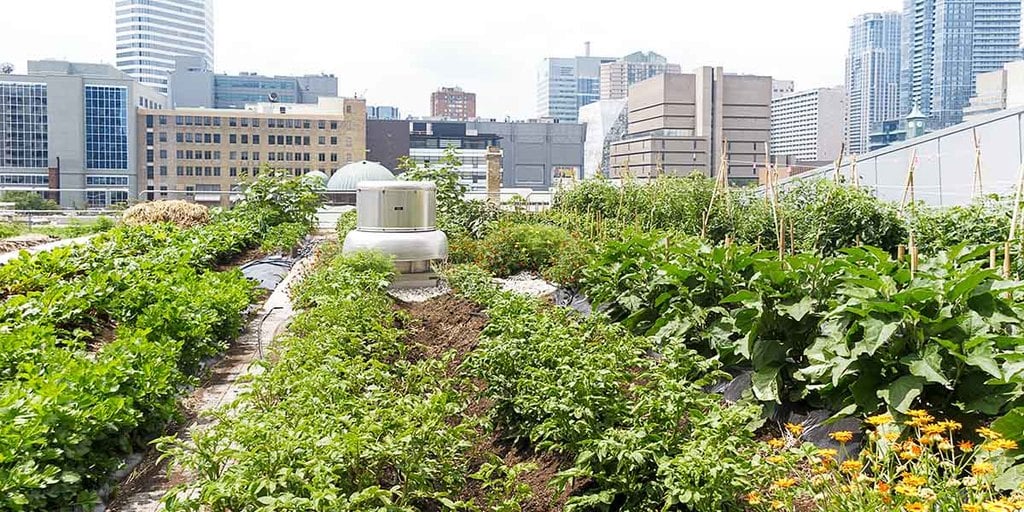Unknown Facts About City Blooming
Unknown Facts About City Blooming
Blog Article
The Only Guide for City Blooming
Table of ContentsMore About City BloomingFascination About City BloomingAbout City BloomingHow City Blooming can Save You Time, Stress, and Money.City Blooming - Questions
Intrigued in growing food available in the City of Chicago? Considering beginning an area garden? Adjustments to the Chicago Zoning Ordinance enable farming usages like neighborhood gardens and urban ranches in several parts of the city. Below is a checklist of regularly asked questions pertaining to the policies and regulations that farmers need to take into consideration when preparing a metropolitan farming project.
The zoning amendment does not change any various other codes managing composting, building authorizations, acquiring or leasing City owned building, service licenses or ecological contamination. There are existing codes that regulate these issues and they remain in full impact and might be relevant to your job. Area gardens are normally owned or managed by public entities, public companies or community-based companies and kept by volunteers.
Urban farms expand food that is intended to be sold, either on a not-for-profit or for-profit basis. Due to their industrial objective, metropolitan ranches require a business license.
See This Report on City Blooming
The amount of compost product can not surpass 25 cubic backyards at any given time according to the standards in 7-28-715 of the City's Municipal Code. Because the soil at most new yard websites needs modifying, garden compost, soil, wood chips, or various other products can be acquired to create or enhance the growing room.

If a structure permit is required after that the hoophouse will certainly be thought about an accessory structure. You can learn even more regarding the structure permit needs by speaking to the Department of Structures. The 25,000-square-foot dimension restriction is intended to stop a solitary neighborhood garden from dominating a provided block or taking away from the block's existing domestic or business character.
The restriction does not put on yards situated in Public Open Area (POS) districts. Can there be even more than one area yard that is 25,000 square feet on a single block? Yes. The dimension limit puts on specific yards, not to individual blocks. No. Fencing is not called for, however, yards that have large parking lot may be called for to install fencing or various other landscaping attributes.
Little Known Questions About City Blooming.
B1 & B2 areas need that all industrial usage tasks be performed inside. Is fence needed for urban farms? Fencings might be needed, along with landscape design and testing, for particular auto parking areas and outdoor work or storage space areas depending on location and the certain activity taking place.
Yes. Urban farms need building licenses and zoning authorizations before building and construction. Various other kinds of city review may be needed depending upon certain structures, activities, size, landscape design, licensing, public heath and stormwater monitoring issues. A number of these needs are recognized in the project style or allowing procedure, nevertheless, the applicant might be liable to individually recognize particular licenses or allows that may be needed.
The Division of Business Affairs and Customer Defense can aid identify the certain type of organization license that's needed. Off street parking is required for most industrial projects in Chicago. The required number of car parking rooms is based on the number of employees functioning on site and not the square video of the growing room.
Some Known Facts About City Blooming.

A city farm can offer compost material generated on website, nonetheless, the procedure should comply with the laws in 7-28-715 of the Chicago Municipal Code. Aquaponic systems are permitted inside on urban farms in many zoning areas.
As much as 5 hives or swarms of honey bees might be kept as an accessory usage. Nevertheless, beekeepers need to sign up with the Illinois Department of Farming. To find out more about the recommended zoning change you might contact the Division of Housing and Economic Advancement, Bureau of Planning and Zoning at 312.744.8563.
, which takes place in country locations at the edge of residential areas.
8 Simple Techniques For City Blooming
It can include a motion of organic cultivators, "foodies" and "locavores", who look for to form social media networks based on a shared ethos of nature and neighborhood holism. These networks can develop using official institutional assistance, coming to be integrated right into regional town planning as a "shift town" movement for sustainable urban growth.
The a lot more straight accessibility to fresh veggie, fruit, and meat products that might be realised via city agriculture can enhance food protection and food security while decreasing food miles, leading to lower greenhouse gas discharges, thus contributing to environment adjustment mitigation. Several of the initial proof of city farming originates from Mesopotamia.
Report this page